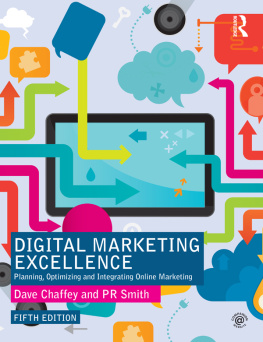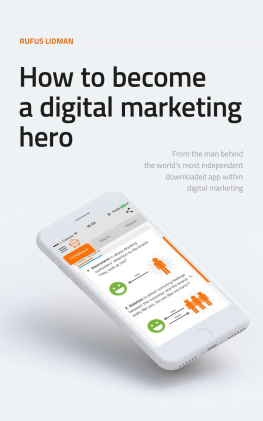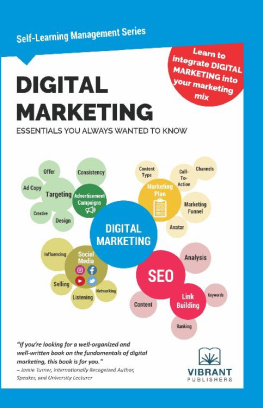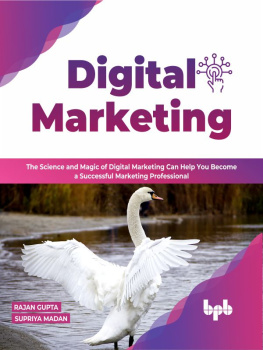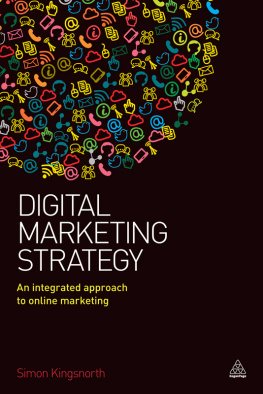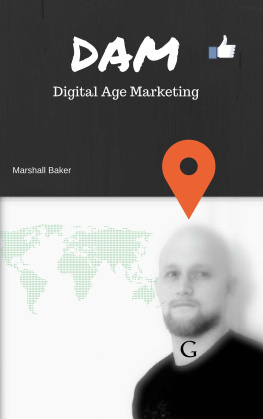Digital media and technology, an opportunity and threat
Digital marketing has transformed how businesses and other organisations communicate with their audiences. The 5Ds of digital marketing we introduce in (digital devices, digital platforms, digital media, digital data and digital technology) can be used, alongside traditional marketing techniques, to get closer to audiences than ever before. Consumers now have access to a much wider choice of entertainment, products, services and prices from different suppliers and a more convenient way to select and purchase items. Organisations have the opportunity to expand into new markets, offer new services, interact with audiences in new ways and compete on a more equal footing with larger businesses. Marketers working within these organisations have the opportunity to develop new skills and to use these new tools to improve the competitiveness of the company.
At the same time, the Internet and related digital technology platforms give rise to many threats to organisations. For example, online companies such as ASOS.com and Zalando (clothing), Amazon.com (books and retail), iTunes and Spotify (music) and Booking.com and Expedia (travel) have captured a significant part of their market and struck fear into the existing players. Many consumers now regularly use social networks such as Facebook, Instagram, LinkedIn, Snapchat and Twitter as part of their daily lives, with the majority of access via smartphones. Engaging these consumers is an ongoing challenge but, as we will see, companies like those above have taken advantage of these opportunities to interact with customers and this has helped them develop as worldwide brands.
Management of digital marketing
With the success stories of companies capturing market share following the rapidly increasing adoption of the Internet by consumers and business buyers, it is a prerequisite that all organisations must have an effective online presence to prosper, or possibly even survive! What Michael Porter said in 2001 is still valid today:
The key question is not whether to deploy Internet technology companies have no choice if they want to stay competitive but how to deploy it.
What are the marketing communications techniques that businesses need to master to make effective use of digital marketing? The proliferation of new media channels, digital technologies and interaction options has given a challenge of understanding, prioritising and managing many new digital communications techniques. To help summarise these at a top level of the customer lifecycle or classic marketing funnel, Chaffey (2010) defined the RACE planning framework shown in . RACE planning defines a structure of 5 5 = 25 key digital marketing techniques that need to be harnessed in most organisations to fully exploit digital marketing to reach, interact with, convert and engage online audiences across the customer lifecycle from generating awareness, conversion to sale (online and offline) and retention and growth of customers. RACE also emphasises the need to plan to create a coordinated, integrated approach to digital marketing, which is integrated with other communications activities.
Table P.1 The RACE planning framework for managing key activities for integrated digital marketing across the customer lifecycle
| Plan | Reach | Act | Convert | Engage |
| Create a digital marketing strategy or transformation plan | Increase awareness, drive website, mobile and social media visits | Generate interactions and leads | Achieve sales online or offline | Encourage customer loyalty and advocacy |
1.1 Situation review
(Chapters ) | 2.1 Media effectiveness review
(Chapters ) | 3.1 Customer journey effectiveness
() | 4.1 Retargeting
() | 5.1 Customer onboarding
(Chapters ) |
1.2 Set vision and objectives, evaluate
(Chapters ) | 2.2 Search marketing
() | 3.2 Data profiling
() | 4.2 Personalisation
() | 5.2 Customer experience
() |
1.3 Strategy
(Chapters ) | 2.3 Earned and Owned media
(Chapters ) | 3.3 Content marketing
() | 4.3 Mobile experiences
() | 5.3 Customer service
() |
1.4 Segmentation
(Chapters ) | 2.4 Paid media
() | 3.4 Landing
pages () | 4.4 Multichannel
selling () | 5.4 Email marketing
(Chapters ) |
1.5 Value Proposition and Brand
(Chapters ) | 2.5 Acquisition plan
(Chapters ) | 3.5 Content strategy and campaign plan
() | 4.5 Conversion rate optimisation
(Chapters ) | 5.5 Social media marketing
(Chapters ) |
Smart Insights (2010) Introducing RACE: a practical framework to improve your digital marketing. Blog post by Dave Chaffey, 15 July 2010, smartinsights.com/digital-marketing-strategy/race-a-practical-framework-to-improve-your-digital-marketing
The table shows the range of different marketing activities or operating processes needed to support acquiring new customers through communicating with them on third-party websites and social media, attracting them to a company website, mobile app or social network and converting interest into leads and sales and then using online media to encourage further purchases and advocacy. You can see that applying social media and content marketing is a part of RACE that can be deployed to support many activities, and therefore is one of the key management challenges in digital marketing, so we consider approaches to managing social media marketing throughout the text, with a focus in Chapters . Applying digital platforms as part of multichannel marketing to integrate customer journeys between traditional and new media is also a major challenge and a theme throughout this text. Management processes related to governance of digital marketing include planning how digital marketing can be best resourced to contribute to the organisation and integrating with other marketing activities. The increased adoption of digital marketing also implies a significant programme of change that needs to be managed. New objectives need to be set, new communications strategies developed and staff developed through new responsibilities and skills.
Digital marketing new skills required?
The aim of this text is to provide you with a comprehensive guide to the concepts, techniques and best practice to support all the digital marketing processes shown in Table P.1. This text (the structure of which is shown in Figure P.1) is based on emerging academic models together with best practice from leading adopters of digital media. The practical knowledge developed through reviewing these concepts and best practice is intended to enable graduates entering employment and marketing professionals to exploit the opportunities of digital marketing while minimising the risks.
Figure P.1 Structure of the text
Specifically, this text addresses the following needs:
- There is a need to know to what extent digital technology and media changes existing marketing models and whether new models and strategies can be applied to exploit the medium effectively.


